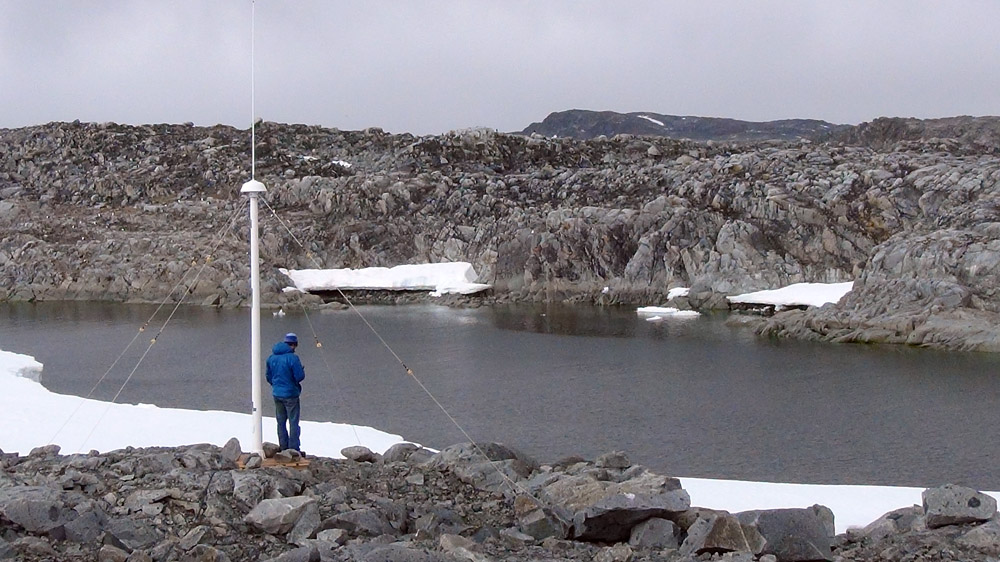|
Converging factorsNew project to use radar array to determine how ocean currents affect food webPosted May 9, 2014
The phrase “going with the flow” takes on a different meaning for scientists studying how tides along the Antarctic Peninsula influence where Adélie penguins go to forage for food during their breeding cycle. Previous research in the region – analyzing 10 years of data from satellite-tagged penguins, an autonomous underwater vehicle and historical tidal records – was the first to link changes in tide cycles to where penguins would find their main prey, Antarctic krill. The results of that work were published last year in the journal PLOS ONE. Now, for the first time, researchers plan to map surface currents in unprecedented detail using radar technology that will allow them to understand better the linkages between physical ocean processes and the polar food web along the western edge of the Antarctic Peninsula. The question is more than academic: The peninsula region is one of the fastest warming on the planet, with average temperatures rising a half-degree Celsius per decade since the 1950s. The Adélies, one of only two true Antarctic penguin species, have declined by more than 80 percent in the northwestern part of the Antarctic Peninsula since the 1970s from climate change, possibly due to the decline in sea ice, an important component of the local ecosystem. Photo Credit: Jon Brack/Antarctic Photo Library
Adélie penguin populations around Palmer Station have declined in recent decades in response to climate change.
“Understanding the links between some of the physical drivers and connections throughout the entire system, going from the primary producers to the zooplankton and the top predators, will allow us to have a better understanding how these shifts in climate might impact the system,” noted Josh Kohut, an assistant professor at Rutgers University Kohut and his team are conducting their study from Palmer Station But it appears to be the unique tidal cycles that may determine whether the penguins search for prey near the underwater canyon, an area known as the Palmer Deep, or closer to their coastal breeding colonies on a small string of islands near Anvers. The Adélies venture to the latter location when diurnal tides dominate, with one low and one high tide per day. Semidiurnal tides, with two lows and two highs, find them feeding on krill farther from home in Palmer Deep. The mixed tide cycle shifts tidal regimes every four to seven days, according to Kohut. The penguin-tide relationship appears to be fairly persistent over the 10-year analysis published in the PLOS ONE paper on which Kohut was a co-author. Lead author Matthew Oliver at the University of Delaware The name of the project refers to the convergence, as well as divergence, of ocean currents at the surface. Where two currents converge there is sometimes an aggregation of organisms. It’s at the convergent points within ocean currents that Kim Bernard For the last four years now, she has tracked krill distribution and density as the correlation between penguin foraging and tidal cycles was being understood. “I wanted to see if the penguins were following their prey, which is most likely going to be the case,” she explained. Indeed that turned out to be the case, with krill swarms bigger and denser near the coast during diurnal tides but smaller and more dispersed during semidiurnal cycles. “There definitely seems to be an impact of tide on krill and on the overall biomass in the region,” she said. “All of this pointed to something happening during the diurnal tides that make krill more accessible to the penguins.” |



For USAP Participants |
For The Public |
For Researchers and EducatorsContact UsU.S. National Science FoundationOffice of Polar Programs Geosciences Directorate 2415 Eisenhower Avenue, Suite W7100 Alexandria, VA 22314 Sign up for the NSF Office of Polar Programs newsletter and events. Feedback Form |


